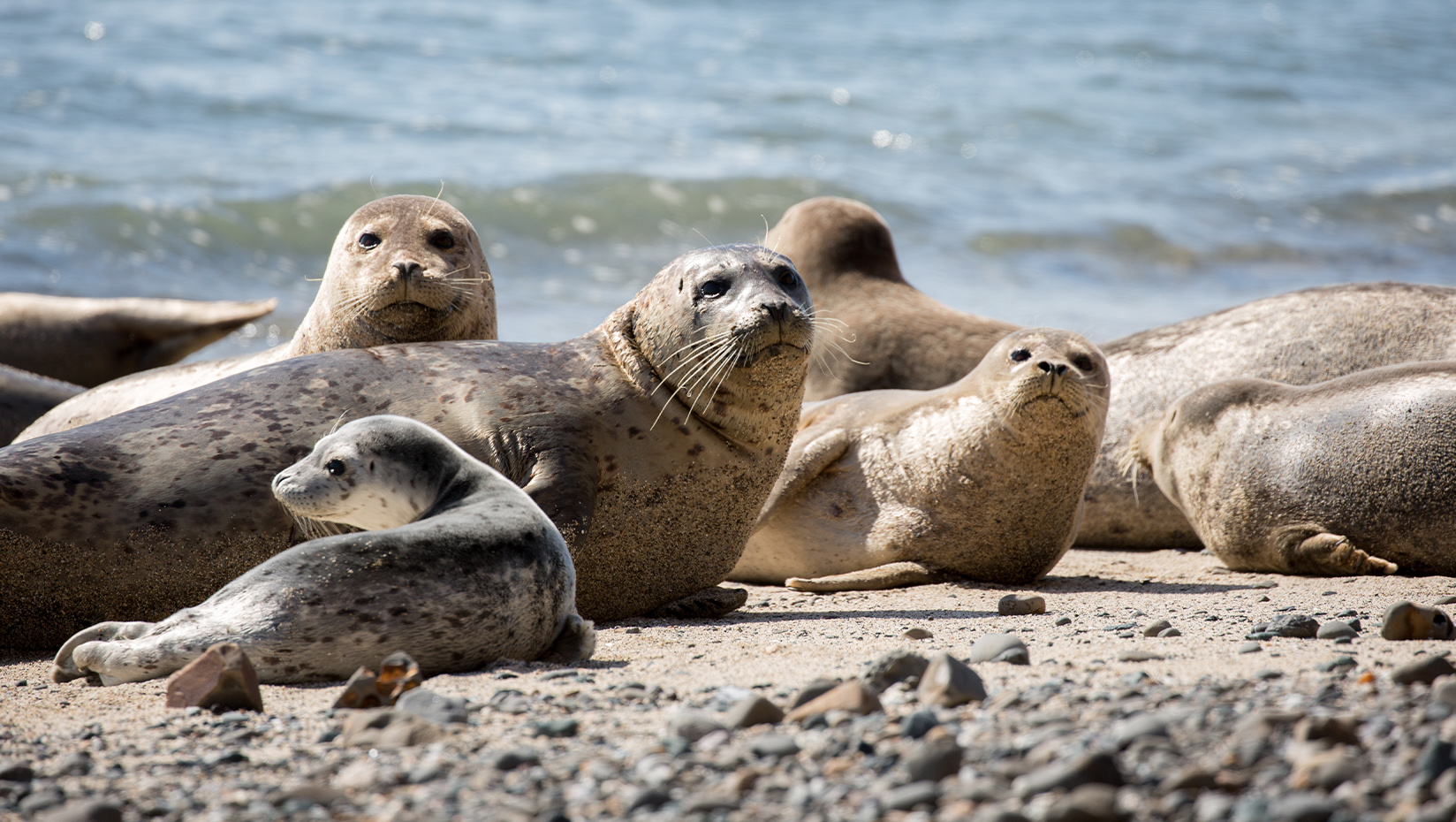
Cammen: History can inform ecologically and socially conscious conservation management
A University of Maine-led research team examined historical interactions between people and ocean mammals to inform future conservation management.
The marine scientists seek to break the loop that includes human exploitation of a wildlife species that causes population decline, implementation of a conservation plan that leads to a population increase, then calls for population control due to wildlife conflicts with people.
Given that until recently depletion of species, rather than recovery, was the norm, it’s not surprising that conservation management is experiencing challenges, says UMaine assistant professor Kristina Cammen.
Knowledge gaps, due in part to shifting baselines, have limited ecologically centered approaches to adaptive management of protected species, she says.
A baseline, in theory, should be set as the population size of a species before human exploitation. Shifting baselines is the theory that when scientists start their careers they perceive a species’ population at that time as the ecological baseline, then assess subsequent changes against their perceived baseline.
Integrating historical ecology (interactions between people and natural ecosystems over long periods of time to better understand the present) will inform broader ecosystem-based policies, says Cammen.
She conducted the research with UMaine professor Bob Steneck and Bigelow Laboratory for Ocean Sciences senior research scientist Doug Rasher.
They examined the literature on prehistorical, historical and contemporary populations of all six protected pinniped species that breed in the contiguous United States — California sea lion, Steller sea lion, northern fur seal, northern elephant seal, harbor seal and gray seal.
These species show relatively parallel histories of exploitation, protection, recovery, and in many cases subsequent conflict.
The team’s review “Predator recovery, shifting baselines, and the adaptive management challenges they create” was published in February 2019 in the Ecological Society of America’s online journal Ecosphere.
Archeological records indicate people hunted for marine mammals as early as 8,500 to 12,000 years ago. In the 1800s, the researchers say extensive commercial hunts targeted carnivorous aquatic mammals, or pinnipeds, which resulted in precipitous population declines and regional devastation.
After commercial hunts ended, bounty programs that continued through 1972 killed another 100,000 sea lions and seals in Maine, Massachusetts, Oregon and Washington, the researchers learned.
While it’s unclear how removing so many pinnipeds affected the ecological system, the team says, in general, removing predators undermines an ecosystem’s resilience.
Since the Marine Mammal Protection Act was put into effect in 1972, pinnipeds have made impressive recoveries. Researchers say it’s reasonable that marine predators’ recovery also would have wide-ranging effects on the ecosystem.
As the species have rebounded, some commercial and recreational fishermen have perceived them as overabundant. This perception is amplified by a narrow ecological view of pinnipeds as predators of commercially valuable natural resources, say the researchers.
Seals also have been blamed for attracting sharks to beaches and degrading water quality at breeding colony sites. Yet, the team says there is little scientific evidence to support a negative effect of seals on water quality in the region.
Going forward, the researchers say it’s necessary to understand that species’ population baselines have shifted upward. In the Gulf of Maine, this shift most likely represents the recovery and recolonization of historical habitats. It also is possible, they say, that seals are more abundant today than ever.
The team says that ecologically and socially conscious conservation management must take historical context into account, utilize expertise from diverse disciplines to understand ecological systems’ complexities, and adapt when unanticipated challenges arise due to recovery of species.
Cammen is part of a May 3 panel discussion titled “Our Ecosystem Today: What recovery looks like in a changing world” at the interdisciplinary, multistakeholder Northwest Atlantic Seal Research Consortium in New Bedford, Massachusetts. The consortium’s theme is “Where Do We Go From Here? Seals and Society: Living in Shifting Ecological and Social Baselines.”
Contact: Beth Staples, 207.581.3777, beth.staples@maine.edu
